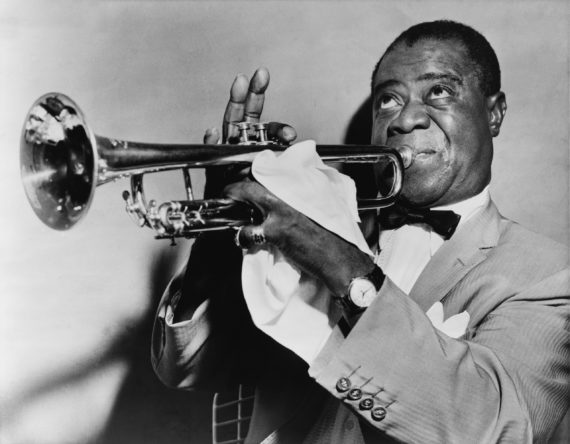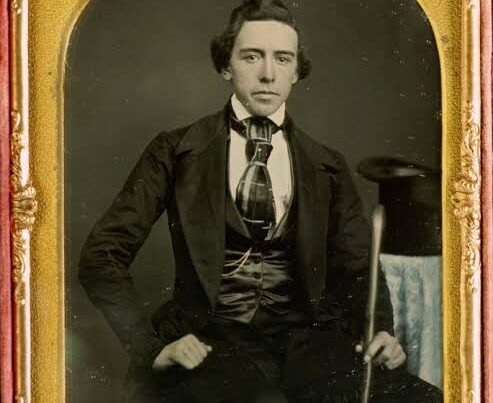
When you hear the word “jazz,” what type of music pops into your head? What do you hear? You probably hear piano, brass, saxophone, or all of the above. But do you hear it melodious and catchy, or do you hear it jumbled and chaotic? There’s a lot of jazz out there that’s very melodious and catchy, and extremely easy to listen to. Unfortunately, there is also a significant amount of jazz that is confusing and befuddling, and it has the effect of turning off potential listeners and fans. The funny part is that it was meant to be that way. It’s intended to be chaotic without any concern for whether you like it or not. So, since a lot of jazz is so purposefully off-putting, how are you supposed to listen to it?
I got this. Let me show you how. But first, how about a little background?
Jazz may be the only art form created by the U.S. Supreme Court. In the late-19th Century, New Orleans had three major, separate thriving communities. There was the White community, which was mostly descended from European ancestors. There was the Black community, mostly descended from slave ancestors. And then there was the Creole community. The Creole community was culturally closer to Europe than Africa, and was not considered to be a part of the Black community until the U.S. Supreme Court issued its infamous “separate but equal” ruling in Plessy v Ferguson in 1896. Homer Plessy was a Creole who unsuccessfully challenged the “back of the bus” standards in New Orleans, and the Supreme Court’s ruling meant that for the first time, the Creole community in New Orleans was considered to be “Black.” The Creole community and the Black community in New Orleans were thrown together, and their separate cultures and arts began to mingle and hybridize. Black music featured the storytelling aspect and the organizational structure of the Blues. Creole music featured European-style sophisticated harmony and instrumentation. When they came together, they created Jazz.
I spent the bulk of my college years immersed in jazz music, and I became the obligatory “jazz snob.” I played jazz, I studied jazz, and I listened only to jazz. Anything else was inferior, in my opinion, and I was surrounded by other jazz musicians in my little bubble who believed the same thing. As I got older, I learned that the “jazz snob” phase was something that a lot of young musicians suffer through, and I was lucky enough to emerge on the other side without too much lasting damage to my musical tastes. However, during the time I was drinking the jazz Kool-Aid, I honestly couldn’t understand how non-musicians were able to appreciate jazz. I thought it was far too sophisticated for normal people to be able to enjoy until one day when my brother set me straight.
My brother was a jazz aficionado, but not a musician, and I didn’t understand how that was possible. In a landmark exchange between the two of us (certainly landmark for me), he explained what it was that he liked so much about jazz, and my perspective shifted monumentally. He explained that jazz was fresh and stimulating to his ears, as he was someone raised on rock and pop music. It was different and represented the abstract in art. It was full of energy and collaboration, as the musicians frequently mixed and mingled on each other’s albums without regard to record label exclusivity. Along those same lines, jazz was less formulaic than rock and pop music, and featured the magic of human creation. He also found jazz to be soothing at times, and offered him a sanctuary from rock and pop music. Finally, he enjoyed hearing new instruments that went beyond the rock/pop basic standard of drums and guitars.
Understand, none of this had anything to do with melody, chord structure, modality, improvisation, or any of the things I considered to be vital to jazz. Wow! It changed my perspective, and in doing so, expanded my appreciation of jazz. However, although I could understand what it was he enjoyed about jazz, he still couldn’t grasp what I enjoyed about it. Therefore, that’s what this post is all about. How can a non-musician appreciate the intricate complexities of the musical innovations of jazz?
If you are a non-musician, I’m going to show you how to listen to jazz.
Let’s start with the basics. Is jazz for dancing or for listening? The answer is “yes.” The most popular jazz music in American history was strictly dance-based music, and features a great beat, killer melody, and simple structure. However, the most intellectually stimulating jazz was NEVER intended for dancing. It’s intended for quiet, solitary, reflective listening. The jazz of the 1920’s, 1930’s, and 1940’s was dance-based and very audience-friendly. The American Hit Parade was dominated by jazz tunes, yet jazz would never again be dance-based or very hit-worthy. In the 1950’s and 1960’s jazz became very intellectual, and audience-unfriendly. Jazz turned its back on audience appeal, and regarded any music with wide popularity as being less-than-worthy. Artistically, it was a very self-destructive time, and many people were permanently turned off by jazz. In the 1970’s and 1980’s, jazz fused with rock/pop music, and became audience-friendly again. In the 1990’s, jazz returned to weirdness and audience-unfriendliness. The 2000’s and beyond seem to be a welcome return to audience friendliness, and jazz is regularly attracting a lot of new listeners.
Typically, jazz features two different sections of instruments playing together. The rhythm section consists of drums, piano, guitar, and bass, and provides the rhythmic and harmonic accompaniment for the song – the skeleton. The winds (brass and/or woodwinds) typically provide the melody and improvisation – the meat on the bones. In some circumstances when there are no wind instruments, the piano and guitar can do double duty and provide both rhythm and melody, but most jazz features wind instruments on melody.
Most jazz songs are longer than the typical 3-minute single that dominates pop music charts and radio airplay, which is one reason you rarely hear jazz on the radio. If a jazz song wants to be a hit song, it has to be reduced to three minutes, or radio stations won’t play it. In the late 1970’s, there were several jazz hits in the Billboard Hot 100, and every one of them featured a longer album-version of the song and a shorter single-version that was played on the radio. For this same reason, jazz music is more spontaneous while pop music is more polished and rehearsed.
Popular music is structured around verses and refrains, but jazz music is not. Jazz music comes in a form known as head-solo-head, which allows the song structure to explore the improvisational talent of the musicians. Basically, a jazz song begins with the melody, which may be played several times. Next, there is a middle section where the musicians take turns improvising. Finally, the closing section returns to the melody again, but is usually a shorter section than the opening one. Therefore, it is described as head (melody) – solo (improvisation) – head (melody returns).
Also, the initial “head” part of the song comes in an a-a-b-a form, which means you hear the melody (a), you hear the melody again (a), you hear something different (b), then hear the melody yet again (a). This is a very common form in Western music, and can even be found in something as simple as “Happy Birthday.”
Happy birthday to you (a)
Happy birthday to you (a)
Happy birthday dear somebody (b)
Happy birthday to you (a)
Do you see? All of the “a” phrases match, and the “b” phrase is different.
Let’s try it with a jazz song. This is a Louis Armstrong tune called “All that Meat and No Potatoes,” and the initial part of the song is in a-a-b-a form. Watch and listen to the first 1:12 of the song.
a – 0:00 to 0:17
a – 0:18 to 0:34
b – 0:35 to 0:55
a – 0:56 to 1:12
What you just heard is called the “head.” Did you notice how all of the “a” sections matched each other? If you kept listening to the whole thing, you would hear the solo section next, and then the song would conclude by going back to the head at the end.
Out of all the jazz styles to consider, I believe that a 1950’s style called Hard Bop is the easiest to listen to in following the head-solo-head form. Artists such as Art Blakey and The Jazz Messengers, Clifford Brown, and Horace Silver are great for this. Also, both John Coltrane and Miles Davis went through a Hard Bop phase, but you have to be very selective with their music, because most of it was NOT Hard Bop, and can be very hard to follow if you get lost.
That being said, let’s try a John Coltrane version of a Frank Sinatra hit called “The Way You Look Tonight.” I picked that song in particular because I thought you might already be familiar with the melody. However, when Coltrane plays the melody, he will change it up a little bit, so that it’s still recognizable, but different. Here you go:
Head – 0:00 to 1:15
Solo – 1:16 to 6:51
Saxophone
Trumpet
Saxophone
Piano
Head – 6:52 to the end
Could you follow it? Each solo also followed the same a-a-b-a form as the head, by the way. That means that the rhythm section (piano, drums, and bass) played the same a-a-b-a section six times (head, four choruses of solos, and then head). Since this was a studio recording of the song, John Coltrane behaved himself on tenor saxophone and only played two solo choruses. However, when he played live in a jazz club, his solos frequently extended 30 minutes or more, and Miles Davis would sometimes have to grab him and physically pull him away from the microphone to make him stop.
The final thing to consider as you listen to jazz concerns the improvised solos. Where do they come from? Sometimes, the improvised solos are based on the original melody, and if you listen carefully, you can hear pieces of it buried in there. Sometimes, the improvised solos are entirely original melodies that the soloist creates right on the spot. Other times, the improvised solos feature signature “licks” for which the musician is famous, and manages to work into many different solos on many different songs. But mostly, improvised solos are all of the above.
Classical musicians do not improvise. Every note they play is written out for them, and for the most part, they wouldn’t even begin to know how to improvise. In the Baroque era, some virtuoso solos were expected to be improvised, and they were at the time. Today, however, those formerly improvised Baroque solos are written out and NOT improvised anymore. Jazz musicians, on the other hand, are expected to know how to improvise. It’s a requirement.
Jazz is constantly changing and evolving. A lot of jazz would never fit the format I used above, and would take a lot more patience and understanding in order to appreciate it. But hopefully, I’ve got you started. Hopefully, the next time you hear jazz, you might hear some things you recognize, and know what to listen for in order to be able to enjoy it.






